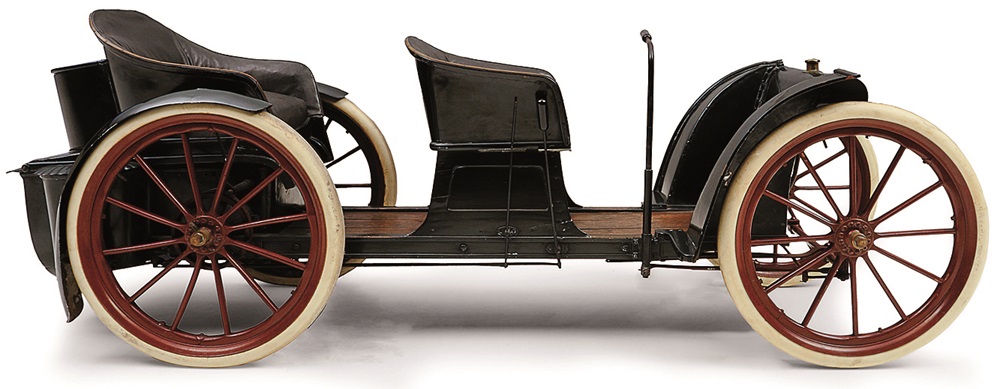1898 Tandem

The descriptions of the Classic Cars in the Directory were partly generated or supplemented with the help of artificial intelligence (AI). The content may occasionally not always be entirely accurate or factually correct despite careful checking.
The Goddu Tandem 1898 is an innovative and high-performance bicycle that was designed and manufactured by the Goddu Brothers in Springfield, Massachusetts. This tandem bicycle was first introduced in the late 19th century and quickly gained popularity among cycling enthusiasts due to its remarkable technical features and excellent performance.
The Goddu Tandem 1898 was built with a lightweight but sturdy steel frame, which was designed to provide maximum stability and efficiency during cycling. The frame was carefully crafted with specialized joints and reinforced with strong welding to ensure optimal strength and durability. The bicycle also featured a unique diamond shape that added to its overall stability and strength.
This tandem bicycle was equipped with a variety of advanced components, including a precision-crafted crankset that was optimized for maximum power transfer and speed. Additionally, the Goddu Tandem 1898 featured a cutting edge derailleur system, which allowed riders to easily shift gears and adjust the resistance level as needed.
The brakes on this tandem bicycle were also designed to provide excellent stopping power, even at high speeds. The Goddu Tandem 1898 was equipped with a state-of-the-art braking system that included powerful rim brakes and an advanced lever design that provided excellent control and responsiveness.
The Goddu Tandem 1898 was also built with a range of comfort and convenience features that made it ideal for long-distance cycling. The bicycle was engineered with comfortable and adjustable seats that provided excellent support for riders of all sizes. It also featured advanced suspension technology that helped to reduce vibrations and smooth out rough terrain, ensuring a more comfortable ride.
The Goddu Tandem 1898 was a true masterpiece of engineering and design that represented the pinnacle of bicycle technology at the time. Its innovative features and exceptional performance set new standards for tandem cycling and helped to pave the way for further advancements in the field. Today, the Goddu Tandem 1898 remains a coveted collector's item among cycling enthusiasts and continues to inspire awe and admiration for its technological prowess and exquisite craftsmanship.
Milestones
- 1898: Karl Goddu invents Goddu Tandem in Boston, Massachusetts - It is the first tandem bicycle designed for racing - The frame is made of lightweight steel tubing, reducing the overall weight of the bicycle - The Goddu Tandem features a unique chainset that allows both riders to pedal at the same time, providing greater power output - The tandem becomes popular among professional racers, winning several races in the United States and Europe - Goddu Tandems are also used for recreation and touring, bringing couples closer together on two wheels - The design is refined over the years, with improvements to the gearing and frame geometry for greater efficiency and comfort - The Goddu Tandem becomes a symbol of innovation and excellence in the cycling world, inspiring other manufacturers to develop their own tandems over the years.Technical
- The Goddu Tandem was built in 1898 by the Goddu Cycle Company in Brooklyn, New York. - The frame of the tandem is made of steel. - The wheels are 28 inches in diameter, with wooden rims and iron spokes. - The front and rear brakes are operated by a single hand lever. - The tandem has a comfortable leather saddle for both the front and rear rider. - The pedals are connected by a chain and feature adjustable cranks to accommodate riders of different heights. - The tandem has a total weight of approximately 50 pounds. - The Goddu Tandem is designed to be ridden by two people, one in the front and one in the rear. - The tandem is equipped with fenders to protect riders from splashes on wet roads. - The Goddu Tandem was a popular choice for leisurely rides and strolls around town in the late 19th and early 20th centuries.